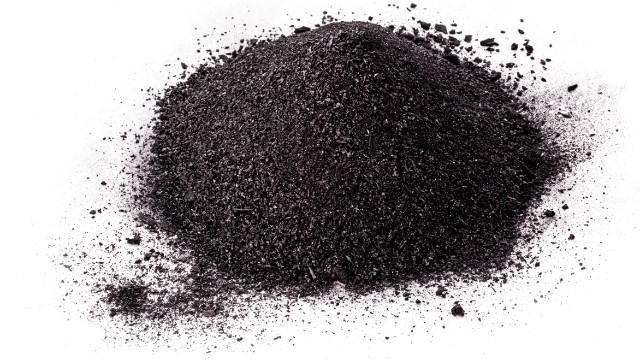
Press Release
Aurubis and Talga partner to develop first-of-its-kind process for battery-grade recycled graphite
Hamburg | Tuesday, September 10, 2024

- Next step in leveraging Aurubis’ effective and patented lithium-first battery recycling process with Australian battery anode and advanced materials company Talga
- Boosting sustainability: High potential for reducing CO2 emissions by enabling the use of recycled graphite in anode production
- Higher independence: Aim to establish a European supply chain for crucial battery input materials in line with Critical Raw Materials Act
Aurubis AG and Australian battery materials and technology company Talga Group Ltd signed a development agreement for a recycled graphite anode product from lithium-ion batteries. Tests with initial batches of Aurubis material from lithium-Ion batteries have led to very promising results. The development project aims to extend the Talga technology to all Aurubis graphite feed materials through closer collaboration between both companies.
Aurubis' expertise in recycling complex materials will be complemented with Talga's innovative graphite processing and anode making technologies. The partners aim to finalize this development for product readiness by 2025. The project is driven by growing customer interest in recycled graphite anodes. Aurubis and Talga follow the strategic approach of keeping valuable graphite in the loop to establish a European supply chain for this valuable material, which is a crucial input factor for the battery industry.
With our metallurgical expertise and pioneering role, Aurubis has the potential to develop a circular solution for graphite.

Inge Hofkens
Chief Operations Officer Multimetal Recycling
Aurubis’ lithium-first recycling process generates high-quality graphite
Aurubis extracts valuable metals such as lithium, nickel, cobalt, manganese and graphite using a hydrometallurgical process, with high yields of around 95% across all metals on average. The metals recovered in the Aurubis recycling process can then be used for new batteries and other products.
Graphite accounts for around 30% of lithium-ion batteries. Aurubis extracts graphite in concentrate form with a high purity of >90% carbon grade using its effective and patented lithium-first battery recycling process. The multimetal producer has successfully tested its lithium-first process in a pilot plant at the Hamburg site and is currently building a demonstration plant. Both plants have sufficient capacity to provide the necessary testing material.
Talga will purify the graphite concentrate supplied by Aurubis and refine it into battery-ready anode material using its patent-pending recycled graphite processing and patented anode production technologies, modified from the company’s Swedish natural graphite mine-to-anode project.
“We see this partnership as an important opportunity. With recycled graphite, we are keeping crucial battery input material in the loop. The target is to increase the EU’s independence from foreign graphite supply chains and laying the groundwork for massive CO2 savings — as we have with copper,” Aurubis COO Multimetal Recycling Inge Hofkens commented. “Partnering with Talga to close the loop for graphite from battery scrap enables us to further leverage our effective and patented battery recycling process. With our metallurgical expertise and pioneering role, Aurubis has the potential to develop a circular solution for graphite.”
Talga CEO Martin Phillips commented: “We are pleased to partner with Aurubis on the development of a commercial recycled anode product. This partnership aligns with our broader ambition to produce battery materials that enable the world’s most sustainable batteries.”
Graphite: crucial energy intensive input material for battery production; mainly made in China
Graphite is crucial for battery production, where it plays a critical role as the primary anode material that enables high conductivity, performance and charge capacity. The production of synthetic graphite is very energy intensive and one of the largest CO2 contributors of batteries. Hence a recycling process has high potential for CO2 savings in the fast-growing battery production market, where all known battery production processes are based on graphite. The main producers for graphite are in China. China also accounts for the majority graphite production for battery anodes.
EU encouraging battery recycling projects
The EU has implemented numerous policies to encourage the uptake of recycled battery materials. The Critical Raw Materials Act has set a 2030 target of 25% of annual strategic raw materials consumption (which includes graphite) derived from recycled sources.
Additionally, the EU’s Battery Regulation has set ambitious targets for battery makers: Overall recycling efficiency of lithium-ion batteries must be at least 70% by the end of 2030. Recycling spent graphite can become a substantial building block to achieve the requirements. The Battery Regulation will also require battery makers to declare the provenance of all materials used in battery manufacturing to satisfy ESG (Environment, Social and Governance) due diligence requirements.
Downloads
-
Um die heruntergeladene Komponente zu sehen den QR code scannen
Press Release as PDF
PDF
1 MB
-
Um die heruntergeladene Komponente zu sehen den QR code scannen
Press image: graphite
JPG
7 MB

Christoph Tesch
Head of Corporate Communications
| Mobile | +49 172 4382 388 |

Meino Hauschildt
Manager Corporate Communications, Spokesperson
| Phone | +49 40 7883-3037 |